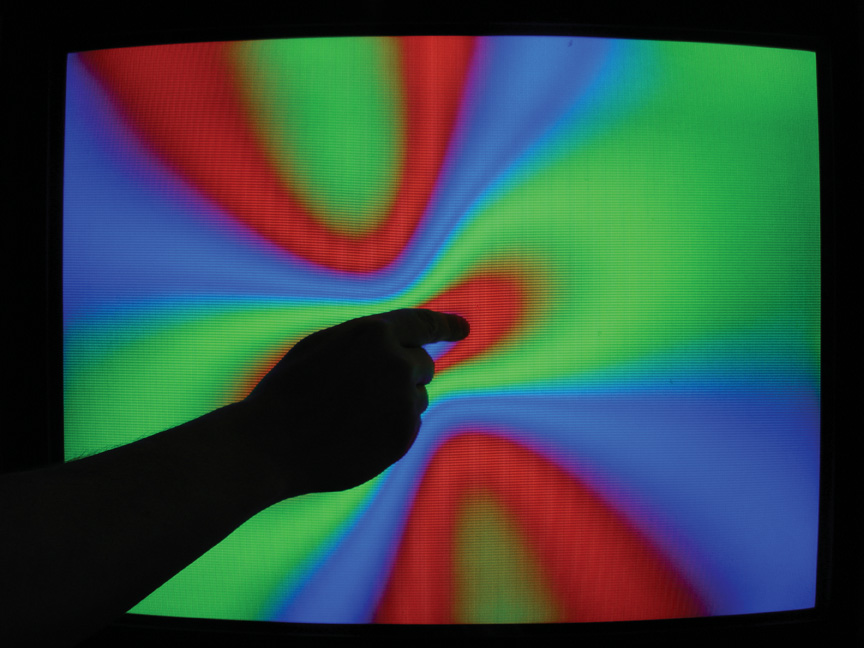Tie-Dye TV
 |
A television relies on a device known as the cathode ray tube, or CRT, to display its images by firing electrons onto a phosphor-coated screen. The electrons are directed into position by a series of electromagnets at the base of the CRT behind the screen. This picture illustrates the interaction of two fields: the electromagnetic field of the electron beam and the magnetic field of a strong rare earth magnet concealed in the person’s hand. The blue background of the television has been changed to a psychedelic pattern by the earth magnet, which is deflecting the path of the electrons to produce the colourful image in the picture. A powerful magnet placed on the surface of the display disrupts the electron flow and rearranges it into the shape of the shared magnetic fields of the beam and that of the earth magnet as seen in the photograph. The symmetrical pattern then emerges from the center of the field where the magnet is placed. This picture also shows how the three primary colours of light are used in television sets. Combining these colours can produce the wide range of colours seen regularly on television; for example, the area between the red and green bands on the screen is yellow, the colour that is produced when red and green lights are combined. Magenta is also seen between the blue and red bands; cyan is seen between the green and blue bands.
Stephen Chan
St. Elizabeth Catholic High School, Richmond Hill, Ontario
2nd Prize ( HS Class Category )
Questions or comments regarding these pages may be sent to / Les questions ou commentaires concernant ces pages peuvent être envoyées à
cap@uottawa.ca